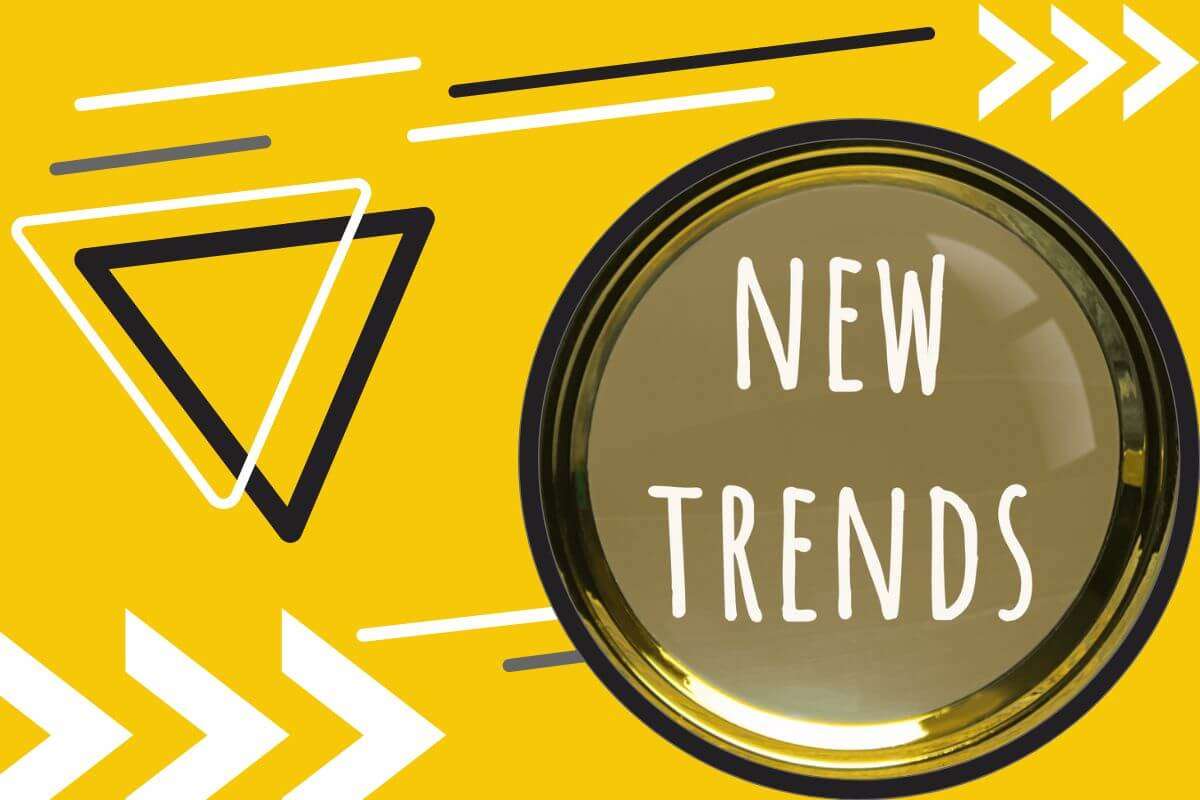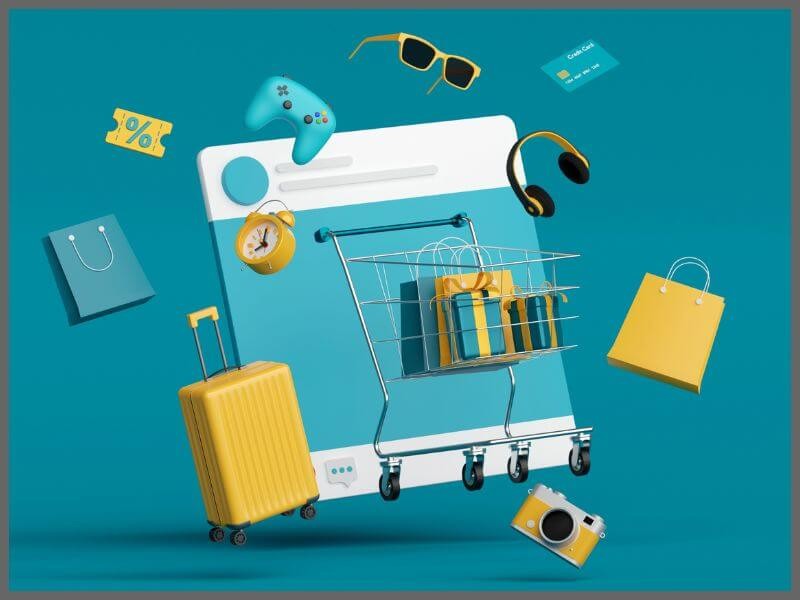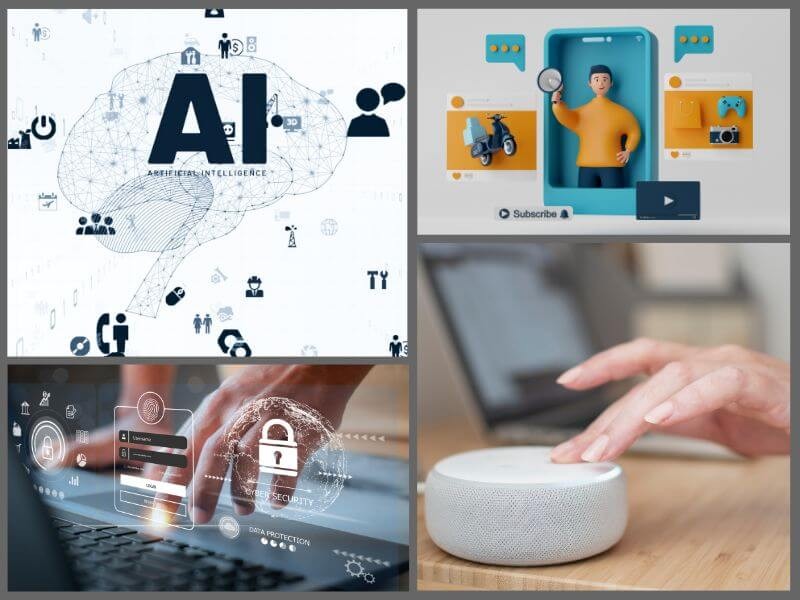
What are the latest marketing trends? What can you do to stand out in an ever-evolving market? How can you remain relevant and engage with your audiences? Find out what you can do today to improve your brand's visibility.
Did you know that businesses are expected to spend over $500 billion on digital marketing worldwide this year?
We have also found information that businesses are expected to spend 5-15% of their budget on marketing services.
With technology evolving at great speed, staying updated on the latest trends isn't just an advantage—it's necessary to remain competitive.
Advancements like AI and machine learning, voice search and the dominance of video marketing allow your company to better engage with your audiences and optimise your marketing strategies.
Embracing these trends enhances brand visibility, improves customer experiences and drives higher conversion rates, ensuring you are relevant (and effective) in an ever-evolving market.

Everyone is talking about AI, but few really understand it or know how to use it properly. The Internet is starting to be filled with texts that inform, but don't do much else.
Social media is filled with posts with overly long texts that nobody reads. AI has turned the common man into an expert writer. Or the common man thinks so.
This can harm digital marketing in several ways. Overusing AI in content creation can lead to situations where the audience doesn't engage anymore, and algorithms have to be altered.
Another thing is that people lose trust in companies that create their content or texts, thinking, "I can do this," and thus making nonsense text and posts that aren't verified or have any value whatsoever.
Artificial Intelligence (AI) and Machine Learning (ML) should be used to upgrade digital marketing, enhance customer experiences, and improve marketing efficiency.
And yes, we will say it – you already use both AI and ML but are unaware of it in every instance.
But what are these two, actually? How do they differ?
AI is simulation of human intelligence processes by machines. At the same time, ML is AI's subset that enables systems to learn from the data provided and improve over time without explicit programming.
AI and ML are considered pivotal in digital marketing for several reasons, although people are still careful when using them.
They power chatbots that provide instant customer service, offer predictive analytics to forecast consumer behaviour, and enable personalised content delivery tailored to individual preferences.
AI-driven chatbots can handle customer inquiries 24/7, providing product recommendations and enhancing user engagement.
Predictive analytics, for example, allows companies like Netflix to recommend shows based on viewing history, significantly increasing viewer satisfaction and retention.
Amazon uses AI for product recommendation based on past purchases and browsing history, driving a significant portion of its sales.

Voice assistants, such as Amazon's Alexa, Google Assistant, and Apple's Siri, have brought innovation into people's lives.
However, due to the growing prevalence of smart speakers, voice search optimisation has also become a big component of digital marketing.
The number of people who use voice commands to search for information is constantly growing, so all businesses are expected to adapt if they wish to remain relevant.
How to do it? Focus on natural language processing and conversational inquires. Integrate long-tail keywords and phrases that mirror how people speak rather than type.
For instance, instead of optimising for "best Asian restaurant near me," a voice search query might be "What is the best Asian restaurant in (insert town name)?"
Additionally, make sure your content provides concise, direct answers to improve its chances of being featured as a voice search result.
Several brands excel in voice search optimisation. Domino's Pizza, for example, has integrated voice search into its ordering process, allowing customers to place orders seamlessly through voice assistants.
Similarly, Nestlé provides voice-activated recipes, making cooking easier by following step-by-step instructions via smart speakers.
We could say voice search is nothing new, but in our market, it's still quite unused. It will take some time, but like any innovation, it will become normal in our daily lives.

Video marketing has become a dominant force in digital marketing, Particularly with the rise of short-form videos on platforms like TikTok and Instagram Reels.
These platforms have popularised content consumption by promoting quick, engaging videos that capture viewers' attention in seconds.
For instance, TikTok's algorithm favours high engagement and frequent content updates, turning ordinary users into viral sensations and brands into trendsetters.
It has turned people who don't say a word in their videos into millionaires. That is the power of social media today.
Live streaming is another digital marketing trend you can use to connect with your audience in real time.
Platforms like Facebook Live, YouTube Live, and Twitch can help you host product launches, and live events, fostering a sense of immediacy and personal interaction.
Nike frequently uses live streaming for product launches and behind-the-scenes looks at major sporting events, creating an interactive experience for their audience.
Our tip: Keep videos short and to the point, use captivating visuals, and incorporate storytelling to make an emotional connection.
Use subtitles to increase accessibility and engagement, as many users watch videos without sound.
Make sure your videos have quality production and consistent posting schedules, and remember to use user-generated content (with their approval, of course).

You may ask, what is this marketing trend? Another fad? Actually no.
Integrating social media and e-commerce, social commerce transformed how people buy and interact with brands online.
This trend enables shopping directly within social media apps, making the buying process faster and simpler. The market for social commerce is experiencing growth, with global sales expected to reach 1 billion dollars every year. And it's growing. Rapidly.
Leading social commerce platforms include Instagram, Facebook, and Pinterest.
Instagram's "Shop/shop now/order now feature allows users to browse products, view prices, and make purchases without leaving the app.
Facebook Marketplace enables peer-to-peer buying and selling, while its "Shops" feature allows businesses to create customised online stores within the platform.
Pinterest's "Buyable Pins" let users purchase items directly from pinned images, enhancing the platform's utility for retailers and consumers alike.
To integrate shopping experiences successfully on social media create visually appealing, quality content that highlights products. Use hashtags and links to direct users to product pages.
Use content that has value. You will build trust and authenticity, and customers will be more willing to share their purchases and experiences.
Engage with followers through comments, stories, and live sessions to further boost visibility and interaction.

If you haven't begun personalising your marketing - what are you waiting for?
The latest marketing trend is switching from generic to personalised marketing.
Because people don't tolerate generic anymore.
Personalisation involves tailoring marketing messages to individual consumers based on their preferences and behaviours.
Hyper-personalisation takes it a step further - it uses real-time data and AI to deliver highly customised experiences.
For example, Spotify uses AI to create personalised playlists which use songs based on the user's listening habits, resulting in a highly engaging user experience.
The benefits of personalised marketing strategies should not be neglected. Personalised emails, for instance, have a higher open rate than generic ones.
Studies show that 80% of people are more likely to purchase when brands offer personalised experiences.
Personalisation also increases customer loyalty and retention. Amazon's recommendation engine accounts for 35% of its sales, making it one of the best examples of how personalised experiences drive revenue and customer satisfaction.
But why personalisation? The move towards personalisation and hyper-personalisation in marketing is driven by the need to create meaningful connections with consumers.
Delivering bespoke experiences that meet (and exceed) customer expectations ultimately leads to increased engagement, loyalty, and sales.

As people's privacy and data security awareness increases, regulatory measures become more stringent. Which is entirely expected and normal.
The General Data Protection Regulation (GDPR) is a prime example, imposing strict rules on how businesses collect, store, and use personal data.
Non-compliance can result in hefty fines. So, prioritise data security and avoid fines, and you'll be fine.
How to do this? Implement data encryption methods and regularly update security protocols. Transparency is also critical; clear communication of data collection practices and easy-to-understand privacy policies are also necessary.
Integrate data protection into business processes and technologies from the start.
If you want all parts of your company to adhere to privacy standards, you can do regular audits and personel trainings on data protection.
But if we are being real, data security is not just the latest digital marketing trend.
Technologies such as artifical intelligence and machine learning are becoming more integrated into marketing strategies, and these tools must comply with privacy regulations.
Consumer expectations around data privacy will continue to rise, making it essential for you to adhere to regulations and proactively protect consumer data if you want to retain the trust and loyalty you gained.

The latest marketing trend shows a rise in micro and nano-influencers.
You might think an influencer is an influencer; what's the difference?
Micro-influencers have 10,000 - 100,000 followers, while nano-influencers have fewer than 10,000 followers.
Despite their smaller audiences, these influencers often have higher engagement rates and more genuine connection with their followers than those with larger followings.
For example, a study by Markerly found that influencers with less than 1,000 followers have aprox. 8% engagement rate, while those with over 100,000 followers had an average engagement rate of just 1.7%.
Authenticity and long-term partnerships have become the norm in influencer marketing. Companies are shifting away from one-off campaigns towards making continuous relationships with influencers.
This approach builds trust and credibility among the audience, as these continuous collaborations suggest genuine endorsement.
Measuring the return on investment (ROI) in influencer marketing can be a challenge, but it can also be done.
Metrics such as engagement rates, click-through rates, and conversions are commonly used.
Google Analytics and influencer marketing platforms like HypeAuditor and Traackr can show how influencer collaborations impact your brand's performance.

Marketing trends are not just trends – they work. And the sooner you begin to follow some of them – the better.
It's not complicated; it may take some time, but the effort will be rewarded multifold.
Our best advice is to adopt these strategies to enhance your marketing effectiveness and build stronger, more meaningful connections with your audience.
But you don't have to implement them all—pick the ones that suit you best or are easiest to implement.
Need help? Contact us, and we'll help you implement the latest unavoidable trends in marketing.